Rose Elf (Elfe)
Climbers are a subgroup of climbing roses. They are also called climbing and are often used in vertical gardening. A distinctive feature of this subgroup is large flowers. At the beginning of the 21st century, a new type of climber with the fabulous name Elf appeared on the rose market. He immediately attracted the attention of flower growers all over the world. For those who are not yet familiar with the novelty of German breeding, we will help you understand the description and characteristics of this plant.

History of creation
This fabulous beauty appeared in 2000. Place of creation - Germany, a rose-growing company Tantau, which has been famous for over 100 years. By Hans Jürgen Ewers. The new variety is part of a large series called "Nostalgic Roses" and is considered one of the most beautiful in it. In the classification, the variety is listed as Large-Flowered Climber (LCI). The variety is known under the names: Elfe, Francice Jordi, L'Alcazar (in France), TANelfe. The exhibition name of the Elf is Pride of Venus (the pride of Venus).
Our heroine should not be confused with other species that bear similar names:
- Elfe by Tantau, registered in 1945 by Mathias Tantau. It is a floribunda with a flat semi-double flower (about 10 petals). The color of the petals is white, sometimes with pale pink strokes on the edges, the aroma is strong. This species is no longer bred by rose-growing companies.
- Elfe, marketed as TANefle, is a hybrid tea by Hans Jürgen Evers, introduced in 1985. This rose variety was distinguished by a mild aroma, semi-double shape (20 petals). The coloration was described as light pink.
- Another Elfe was introduced by Tantau in 1988. Commercially known as TANcrief. This white floribunda was also designed by Hans Jürgen Ewers.

The listed namesakes, according to available information, have already left the range, thereby making way for one of the most interesting novelties.
Description
Elf's bush is erect and vigorous. The declared height is 200-250 cm, but this is not the limit, the shoots can easily overcome the 300-centimeter bar. In width, the rose grows up to 150 cm. Shoots are strong, thick, grow in large numbers from the root. Covered with large reddish thorns. The lower branches slope downward. The foliage is decorative, dark green, glossy-shiny, healthy, serving as an excellent background for blossoming flowers. On each shoot, one flower or a loose brush is formed, consisting of 3 buds.
The buds are not very large, white-green in color. The unfolding flower is distinguished by its extraordinary delicate color. At the base, the petals retain a pale green hue, which smoothly turns into a noble ivory color, in the center the color becomes pale yellow. The flower is densely double, consisting of more than 41 petals, the edges of which fold back as they bloom. At the stage of full disclosure, Elf's flowers are considered one of the largest - their volume is from 8 to 14 cm.The bud is very dense, even during the period of full disclosure, the middle is practically invisible. A blooming rose fills the air around it with a wonderful scent of citrus, combined with notes of vanilla.

Bloom
The variety belongs to the re-flowering species. The flowering period begins in June and lasts almost continuously until the very cold snap. The first wave of flowering, which is rich in size and abundance of forming buds, dies out in July, but not for long. The re-flowering is no longer so abundant and large-flowered, but continues to delight with fresh colors and aroma. Flowers last more than a week. From the beginning of the opening of the buds to the almost final stage of flowering, Elf's flower brushes look spectacular. But faded specimens do not have a very aesthetic appearance, it is advisable to cut them off in time.
Characteristics
- You can enjoy the unusual color of the rose in the 2nd year after planting;
- the growth and opening of Elfe buds proceeds slowly, but the blossoming flower brushes retain their decorative attractiveness and freshness for a long time;
- the plant, although it is intended for warm regions, can perfectly winter when the temperature drops to -29 ° C, which corresponds to the 5th USDA winter hardiness zone (US Department of Agriculture). The Elf nevertheless upset some flower growers with freezing, however, this misfortune happened with young plants;

- the immunity of the fabulous beauty is quite strong, it perfectly resists the insidious black spot and powdery mildew. According to the observations of some rose growers, the plant is loved by some leaf-eating insects, especially bronzes;
- the rose does not like rain. The opened flower gets soaked, there is no trace of graceful beauty. And the Elf's buds from the combination of moisture and coolness may not open at all;
- according to reviews, a flowering plant is not afraid of the bright sun and tolerates hot periods well;
- sturdy shoots with flower tassels look great in a vase.
Planting and leaving
In central Russia and cooler regions, seedlings are planted in the spring. In warm, southern ones - in autumn. The rose bush will immediately start growing only if certain rules are observed. Requirements for the soil - loose, light, fertile, moisture and air permeable. If the soil is heavy clayey, humus, sand and peat are added to it to improve the structure. Choose a place that is sunny, well warmed up. Considering the spreading nature of the Elf bush, the recommended planting density is no more than 2 plants per 1 square meter.

Despite the resistance to high temperatures and short-term droughts, watering should be carried out in a timely manner. But the soil should not dry out too much, its normal state is moderately moist. Top dressing will help the plant to bloom for a long time and form large flowers. For this, the bush is fertilized in the spring and after the first wave of flowering. Autumn dressing increases winter hardiness. Pruning is best done in the spring, unless sanitary pruning is required as needed. In cool regions where winter shelter is needed, the rose whips must be removed and gradually, so as not to break, lay them on a substrate of straw or spruce branches. Spruce branches or non-woven material are also used as a cover.
Using
An elf is able to bring a touch of romanticism to an amateur garden, help to recreate a corner of an old park, or, on the contrary, fill the site with freshness, enthusiasm and energy. The bush can be shaped into almost any shape. For example, to make the crown rounded, boldly throw flowering lashes on a wooden fence, immediately transforming it, twine around a column with branches, make a living flower wall or decorate a gazebo. The options are countless, even more of them becomes if you combine the whitish-greenish flowers of Elfe with other varieties and flowers that match the color scheme. As already mentioned, a rose is also good in a vase, where it is able to keep the freshness of the buds for a long time.
Elf belongs to unpretentious plants. But you really shouldn't leave a gentle beauty unattended - she'll be offended! Only by finding the right, suitable place for the rose and performing simple agricultural techniques, you can count on mutual love and magical flowering, which the plants will generously share with you.
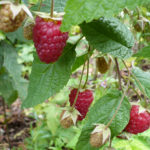
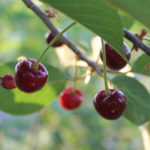
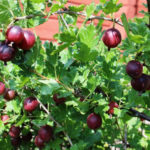
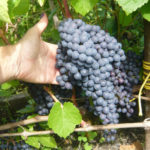
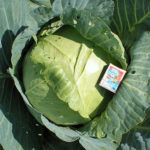
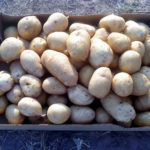



A very delicate and beautiful rose, due to its color it fits into any garden. Care was difficult in the first few years. I overfed with fertilizers, and as a result, I got long shoots with little or no flowering. Care scheme for maximum flowering: fertilization - complex in the spring, then cut off the thriving shoots by a third to get a few more flowers. Without chemical treatment.with drugs on a rose, bronzes often attack. In a rainy summer, it looks sloppy, the buds are locked and do not open.